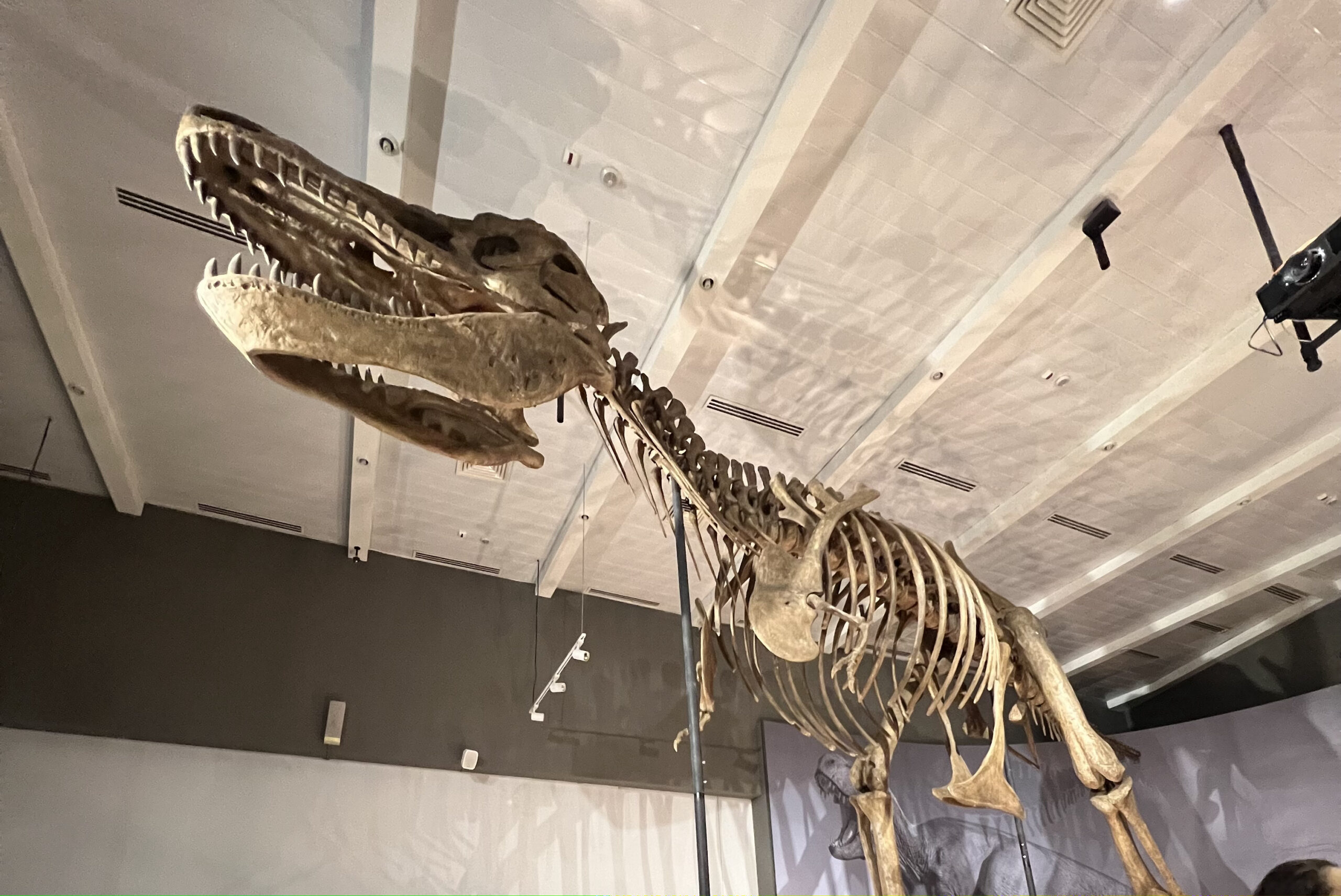ASTANA – Deep within Kazakhstan’s history lies a treasure trove of prehistoric wonders, where massive dinosaurs and majestic mammoths once roamed the land. Valentina Aliyasova, a candidate of cultural science and professor at Pavlodar State University, discussed the dinosaurs that lived on the territory of Kazakhstan with Kazinform on Feb. 27.

Exposition in the National Museum of Kazakhstan in Astana. Photo credit: The Astana Times/ Aida Temerkhan
The world of prehistoric creatures and discoveries illuminate Kazakhstan’s rich paleontological heritage.
Early finds of dinosaurs include fossilized eggs along the Taijuzgen river in East Kazakhstan, hinting at a rich dinosaur heritage. Although no further dinosaur fossils were found, scientists estimate that over 15 dinosaur species once inhabited the area. These include the formidable tyrannosaurus, tarbosaurus, diplodocus, ornithomimus, archosaur, hadrosaurus, triceratops, styracosaurus, titanosaur, trachodon, and stegosaurus.
Recent discoveries have unveiled new dinosaur species that underscore the diverse prehistoric ecosystems of Kazakhstan’s geography. The aralosaurus tuberiferus, a huge plant-eating dinosaur, roamed regions such as Kyzylorda and Zhetysu. In 1968, Soviet paleontologist Anatoly Rozhdestvensky first discovered the bones of aralosaurus. He also found part of the skull, about 60 teeth, and fragments of the skeleton of batyrosaurus rozhdestvenskyi in the Kyzylorda Region.
“There is also information about the discovery of other dinosaurs: arstanosaurus (arstanosaurus akkurganensis), found in the Kyzylorda Region; aral jaxartosaurus (jaxartosaurus aralensis), found in the South Kazakhstan Region; batrachognatus (batrachognatus volans), found in the Karatau Jurassic lake; and mosasaurus (mosasaurus camperi), a large marine lizard found in Kushmurun, Kostanay region,” said Aliyasova.
Apart from dinosaurs, paleontologists have uncovered numerous prehistoric mammals. Among these is the kazakhstanosaurus-ichthyosaur, identified and named by Russian scientist Vladimir Efimov in the West Kazakhstan Region. This sheds light on the diverse marine life that once inhabited Kazakhstan’s ancient seas. In the mountains of the Jungar Alatau, a joint expedition with American scientists found the remains of aktautitan hippopotamopus, one of the largest animals of its time.
The legacy of prehistoric creatures extends to Kazakhstan’s modern regions, where the iconic Tyrannosaurus and mammoth have left their mark. Tyrannosaurus fossils have been found in various regions, including Mangystau, Aktobe, Kyzylorda, Turkistan, Kostanai, Karagandy, and Almaty. Meanwhile, mammoth remains have been found in the West Kazakhstan, Atyrau, Aktobe, Turkistan, North Kazakhstan, Kostanai, Pavlodar, Almaty, Abai, East Kazakhstan, Karagandy, and Akmola regions.
For enthusiasts eager to explore Kazakhstan’s prehistoric past, museums across the country offer insights into the world of paleontology. From lifelike dinosaur models to fossilized remains and detailed maps showcasing Kazakhstan’s dinosaur heritage, visitors can embark on a journey through time at the Paleontology Hall of the National Museum in Astana.


